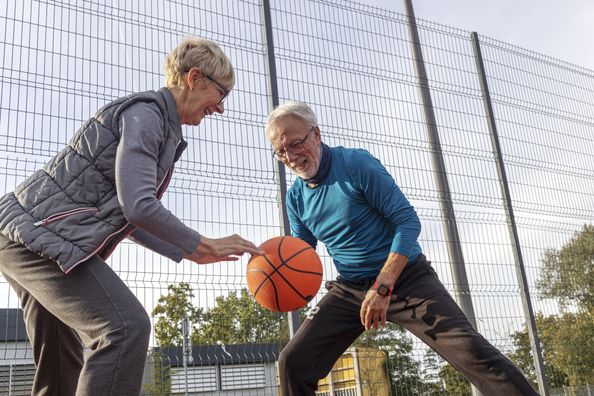Think about your current workout routine. Is it the same every day? Do you find yourself bored or unmotivated? Are you no longer seeing the results you used to?
If you answered “yes” to any of these questions, you may need to add variety and recovery into your routine. These are critical elements of any successful exercise program and can benefit everyone — from workout enthusiasts to those just starting to exercise.
Variety
Variety is foundational to creating an effective exercise program. At the very least, mixing up your workouts will help prevent boredom and keep you motivated to exercise. But variety also has important physiological benefits. Your body can adapt to a repetitive exercise program in just six to eight weeks. This means that becoming stagnant in your routine can soon lead to no additional gains, and you may even experience a drop-off in results.
Here are a few simple ways you can incorporate variety into your workout routine while still enjoying your favorite activities:
- Increase the intensity of your workout — Sometimes, the best way to avoid a plateau in your workout is by increasing the intensity of your activity. For example, if you walk or run, try incorporating some sprints or hills into your route.
- Cross-train — This is one of the most critical ways to avoid plateauing and can even prevent injury. Mixing cardio and strength training, upper and lower body workouts and a variety of exercises and equipment engages your entire body without overloading specific muscle groups. For example, to build endurance, you can mix it up between running, biking, swimming, elliptical machines, Stairmaster or rowing to keep motivated while working your whole body.
- Change the order of your routine — You can also switch up the order in which you perform exercises to challenge your body’s adaptations and fatigue your muscles in different patterns.
Recovery
It may seem counter-intuitive, but appropriate down time from exercise improves your performance. Rest allows your body to go through a critical recovery process where muscles repair micro-tears, allowing them to enlarge and strengthen. This rebuilding process takes 24 to 48 hours and is a natural adaptation to the stress of exercise. Working your muscles too hard before they have a chance to repair may result in tissue breakdown instead of building.
This is where cross-training comes in to play a big part in recovery. Alternating activities allows certain body parts to rest while others are being engaged. Overloading the system in a singular way can be counterproductive. For example, high-mileage runners have a greater risk of overuse injuries, like stress fractures and tendonitis, than those doing the same amount of exercise but spreading physical exertion between running, biking and swimming. Alternating upper and lower body days for strength training also allows muscles to recover.
Timely rest can also help prevent mental burnout. If you’re finding it hard to stay engaged in an exercise routine, try substituting a day or two with lighter activities such as yoga, stretching or walking to stay motivated.
Monotony can bring even the most active people to a screeching halt. Variety and recovery are essential to your overall performance and health, both physically and mentally. If you’re feeling unmotivated to exercise or frustrated with your results, try incorporating these tips into your routine.
If you would like to learn more or talk to one of our orthopaedic specialists, please click here to schedule an appointment online.
Health Topics:







